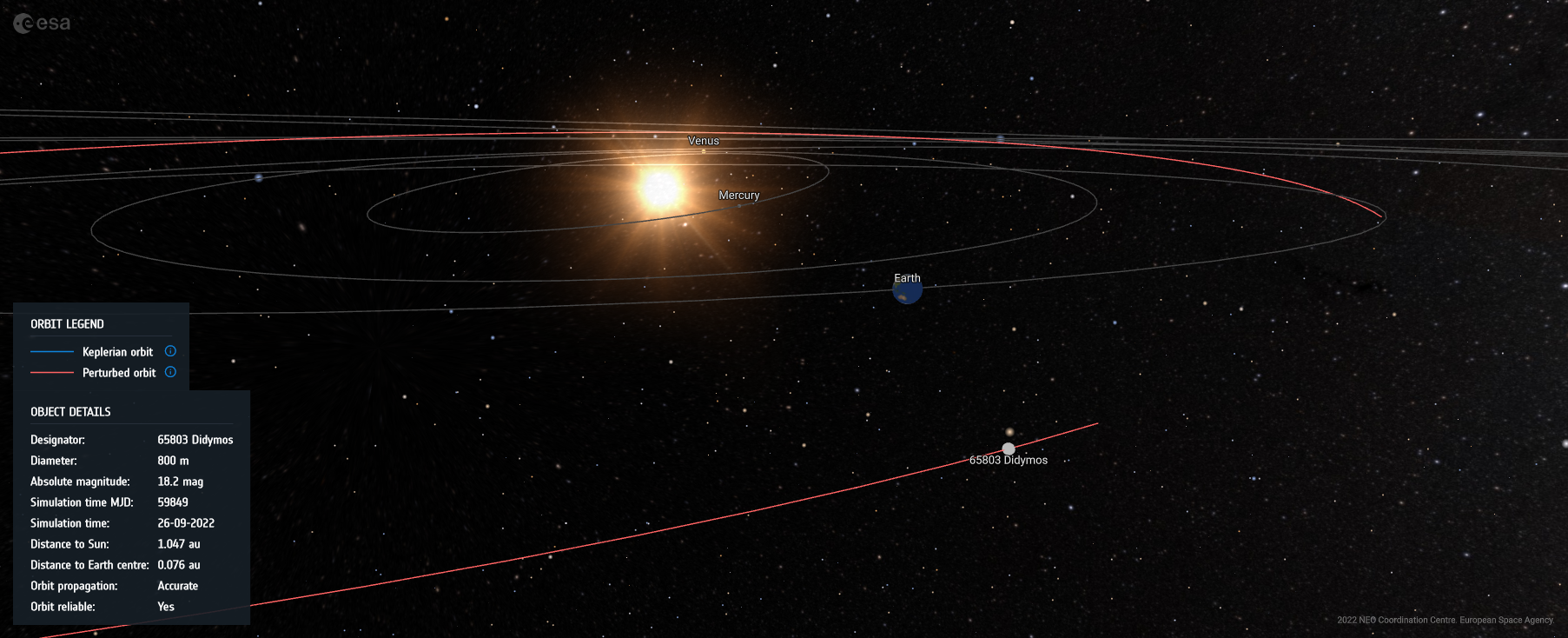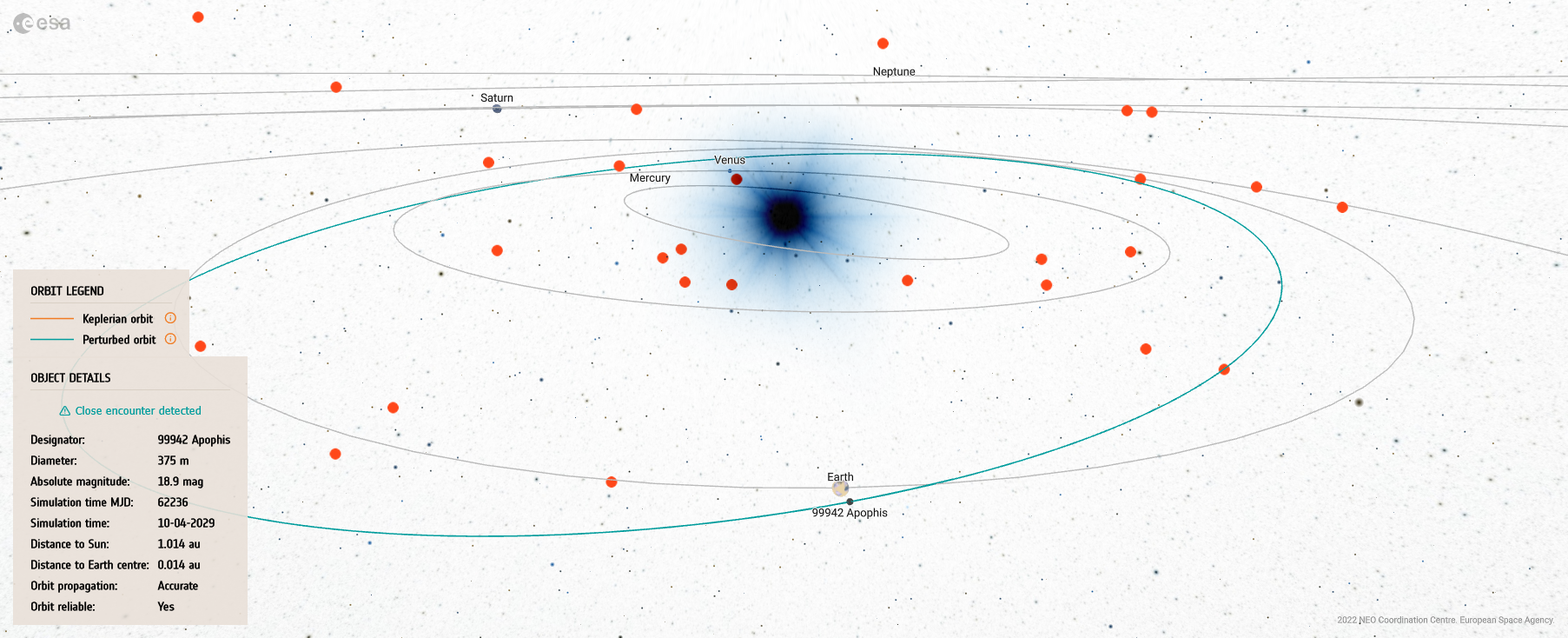The new Orbit Visualisation Tool: displaying NEO orbits in 3D
The new Orbit Visualisation Tool: displaying NEO orbits in 3D

operator neo
Providing astronomers with useful tools is one of the long-term goals of ESA’s Planetary Defence Office (PDO) and its NEO Coordination Centre (NEOCC). The brand-new Orbit Visualisation Tool (OVT hereafter) is the first of a series of tools created by NEOCC for the NEO community: the NEO Toolkit.
The OVT updates and improves the previous Orbit Visualiser of the NEOCC portal, offering the user a new experience in which not only the graphical capabilities have been enhanced, but also a deeper level of configuration and simultaneous visualisation of several near-Earth objects (NEO) is now possible.
The most powerful feature of the OVT is the selection and 3D visualisation of the Keplerian and perturbed orbits of one or more simultaneous asteroids and comets contained in the NEOCC database.
When an object is visualised, the user is provided with a wealth of information pertaining to the spatial and temporal situation of the object. The visualisation allows the user to move freely around the Solar System, displaying various information elements and moving back and forth in time to observe the evolution of the object’s orbit.
Known past impactors as well as past and future close approaches with Earth are highlighted as the date of the event approaches the date of the simulation.
Visualisation of the perturbed orbit of (65803) Didymos (orange colour) on 26 Sep 2022. The DART spacecraft is expected to impact Didymos’ moon Dimorphos on this date. More information on the DART mission is available here. Image credit: ESA / PDO / NEOCC.
Moreover, the OVT offers the possibility of displaying different collections of asteroids according to their properties:
- The complete NEO risk list of the NEOCC.
- Groups of NEOs according to the priority list of the NEOCC: Urgent, Necessary, Useful or Low Priority.
- NEO groups such as Atiras, Atens, Apollos, Amors and others.
- … and more!
Inverted colour visualisation of the perturbed orbit of 99942 Apophis (light blue) on 10 Apr 2029, three days before its close approach to Earth, as indicated in the ‘object details’ legend. The known group of Atira NEOs is represented as light red dots. Image credit: ESA / PDO / NEOCC.
Lastly, the OVT allows the extraction of images (such as those presented here) and web-friendly videos of the visualisation for individual or public outreach purposes.
Clip exported from the Orbit Visualisation Tool, featuring the objects of the risk list as of September 2022 (pink), the Inner Main-belt asteroids (yellow), 99942 Apophis (light grey orbit) and 65803 Didymos (blue orbit), among some planets of the solar system shown along with their orbits (dark grey). Video credit: ESA / PDO / NEOCC.
Along with the OVT, the NEO Toolkit features another three brand-new and complementary tools that focus on different aspects of the observation of NEOs:
- The Observation Planning Tool (OPT) provides the users with precise ephemerides and observational data from NEOs to help them to plan and schedule observations in the forthcoming nights.
- The Sky Chart Display Tool (SCDT) supports the observations by producing a visualisation of the orbits of the NEOs in the sky as observed from any location in the world.
- The Flyby Visualisation Tool (FBVT) offers a high accuracy visualisation of the NEOs that have one or more close approaches to Earth.
Stay tuned for more in-depth information on these three components of the NEO Toolkit. To receive more information about the NEOCC activities and near-Earth objects, you are welcome to subscribe to our services.


